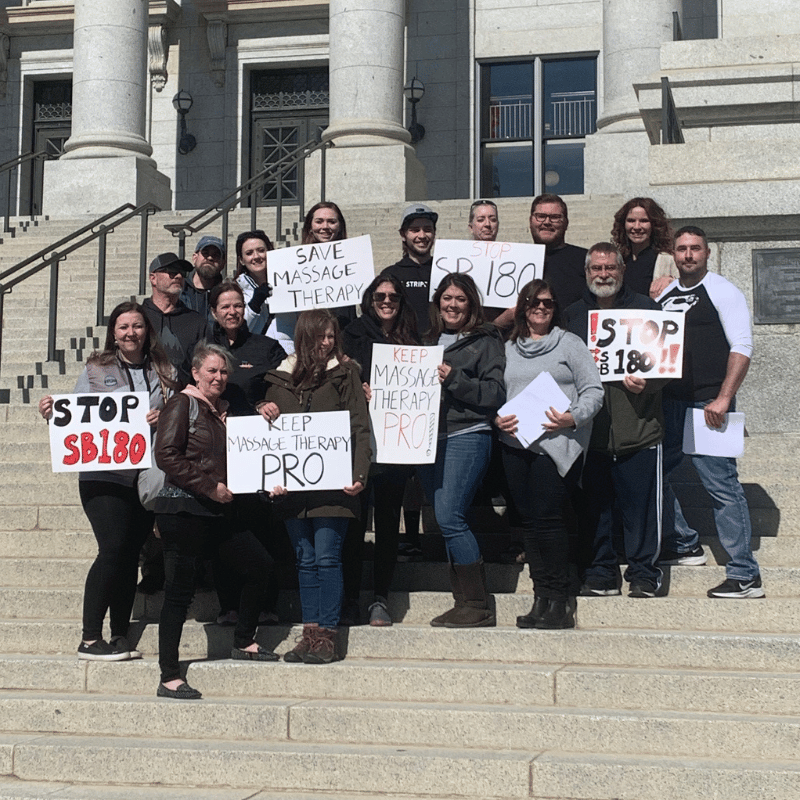
Advocacy 101
Learn what advocacy is, and why AMTA does this work on behalf of the massage profession at the federal, state and local levels.

What is Advocacy?
Advocacy is the act of publicly supporting or recommending a particular cause, issue or policy. This can include lobbying, organizing campaigns, raising awareness to influence decision-makers and public opinion, and supporting issues and legislation to help create positive change.
What is Government Relations?
Government relations is about influencing public policy and legislation at the local, state, and federal levels. AMTA has a dedicated GR team that works on legislative and regulatory issues related to massage therapy year-round to help elevate and strengthen the profession.
What Are the Goals of This Work?
Through our award-winning advocacy and government relations work, we strive to enhance the reputation and acceptance of massage therapy and the crucial role of professional massage therapists in health and wellness.
From championing massage licensure in 50 states to advancing legislation on massage for pain, and helping veterans gain better access to massage — AMTA advocates for issues that matter most to massage therapists across the country!
How Does This Work Happen?
By working with other organizations and associations, AMTA can maximize resources and our impact in areas that are the most beneficial for our members and the massage profession.
The AMTA Government Relations Team meets with key legislators, federal agencies and legislative staff to share the latest research, build relationships, and better represent the profession as the experts in massage therapy. By forging these connections, it helps ensure that AMTA's feedback, public statements to agencies and legislative committees are taken seriously, and that our recommendations are considered for inclusion in legislation and regulations.

Why Massage Therapists Are an Important Part of Advocacy
- As massage therapists, your voice is important — your experience and expertise can have an impact on lawmakers who rely on subject-matter experts.
- Your involvement as massage therapists can elevate the entire massage community.
- Your advocacy grows the awareness and visibility of the massage therapy profession.
Find out how you can take action and use your voice
Where Can Massage Therapists See Change Happening From Our Advocacy Work?
- The increase in recognition and acceptance of massage therapy in the healthcare community.
- The advancements in massage therapy research and standards.
- The elevation of standards for massage therapy licensing and portability across all 50 U.S. states and territories.
- The protection of massage therapy schools and students.
Learn more about our advocacy efforts at the federal level
AMTA’s Advocacy Work Wins Awards
Over the last few years, AMTA has won many awards for our advocacy work. Most recently, we were recognized for our Massage Therapy for Pain Management Integrated Communications and Advocacy campaign with a Hermes Gold Award and an APEX Award of Excellence in 2023.
